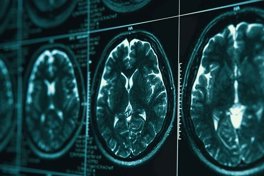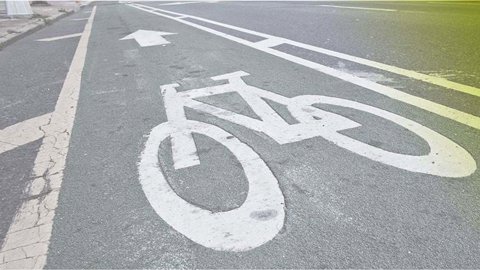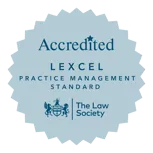Repercussions of the accident
The timing of the accident was on the lead up to Jamie’s GCSEs, but due to his injuries, he had a long period off school recovering. He returned for two weeks, begore he sat his exams in the June of that year. Though Jamie was never a gifted student, he was particularly interested in all things mechanical and had a real talent for working with cars and engines.
Once Jamie had made a full recovery from his badly broken leg, his mother chose to take him to see a local solicitor to open up a head injury claim against the driver who had hit him. Jamie’s mother had noticed that her son had “changed” since the accident that day, as he was no longer helpful, polite or wanting to help around the home. Instead, he became argumentative and lost motivation for anything, even the engines and cars he had been so keen on before.
The arguments got so bad that his mother couldn’t cope and Jamie moved out of the home to live with his grandmother who lived nearby. Since the accident, he also found it impossible to concentrate at college, having enrolled on a course shortly after his GCSEs.
From having predicted grades of Bs in those GCSEs before his accident, he left secondary school with a line-up of C’s and a D – but the fact that he’d managed to pass any exam at all, given the time he had off with his injuries, was testament to the fact that his intellect hadn’t been affected by the accident and the head injury. But it also confirmed that the time he missed in the run-up to the exams and his brain injury had a massive effect on his abilities.
Jamie was struggling in college with being disruptive in class, and lost all motivation and focus, despite his old optimism for his future self. He struggled to find any work because of this change, and because Jamie’s new teachers never knew the bright and positive attitude, he had prior, they just believed that was his ‘typical’ behaviour – and offered no support.
His family and his mother, meanwhile, assumed it was part of him going through adolescence; whilst the college just thought he was a ‘problem teenager’ and were glad to have him leave the course he had enrolled for.
Jamie’s work experience
Jamie’s uncle was not aware of any changes in behaviour, and never linked it to the fact he had an accident when he was 15. He continued to look out for Jamie and even secured a job for him on a production line. The role was repetitive with mundane tasks at a local factory, so Jamie was often getting in trouble for his time-keeping, fatigue and concentration issues.
He was often inappropriate with other workers and fell out with some of the migrant staff, who like Jamie, were on very low wages. Despite being disciplined about his behaviour on numerous occasions, he was able to retain this job mainly due to his own determination not to let his uncle down. He was also desperate for money to pay his bills and the employer overlooked his behaviour as it was hard to find staff for their factory on such low wages.
How Simpson Millar Helped
The family had arranged for Jamie’s legal case to be transferred to Simpson Millar in 2009, as they were unhappy at the delays in the case with the previous Solicitors. At that stage, the previous Solicitor had only obtained a report from a surgeon dealing with the leg fracture but nothing else – which is why we agreed to help Jamie and his family.
One of our Serious Injury Solicitors instructed a neurosurgeon to review the hospital records from Jamie’s accident, because his history and symptoms matched up well with clients that we had helped before. As soon as we heard Jamie’s history of his problems, which seemed to stem from the accident, it seemed that his various difficulties were very similar to other people that he had acted for before, who had all suffered a brain injury in an accident.
As soon as the reports from the neurosurgeons came back, they immediately confirmed our fears, but also clarified what was happening with Jamie. This gave their family some understanding of why Jamie was so different and why his mother had found him so hard to live with after the accident.
The insurer of the driver of the car that had hit him, did not accept this report or agree it was a result of the accident. Though they saw the records for themselves, that showed Jamie suffering with a seizure, and becoming unconscious during the time he had the facial fractures to his head and face; they weren’t agreeing with it.
In their eyes, they saw a young man who had left school without any real qualifications, who had come from a working-class family. They saw that he was able to hold down a job, so they didn’t think he needed any help in the future and wanted to only compensate him for his leg injury.
From all the reports we gathered and the evidence that Jamie exhibited, it was clear that he had suffered a brain damage that would profoundly affect his future. At this point, Jamie’s problems at work had got so bad, that he was told to leave, thus making him unemployed. His grandma suffered a stroke at this time, where he was unable to care for her, and when she subsequently died soon after, he was then made homeless. Because of all these downfalls in Jamie’s life, he had no choice but to return to him mother’s home. By this point, his mother understood that Jamie couldn’t help his behaviour, so she wanted to help him move back to her home.
How a traumatic brain injury affected Jamie
Soon after moving into his mother’s home, if Jamie wasn’t prompted to do something, then he would spend the whole day in his room, in bed. By this time, he was 20 years old, but still acting like a perpetual teenager, trapped in the body of his prior, 15-year-old self.
Traumatic Brain Injury (TBI) is synonymous with changes in behaviour, and in particular, immaturity, as if you are not growing up. This coincided with the anger, moodiness and lack of will to help around his family – which had all happened after the accident.
The expert evidence from the doctors recommended that he needed a full case management package to help motivate Jamie and bring some quality back into his life. The plan, together with a more structured routine and possibly some easy voluntary work, would give him a sense of achievement and purpose.
The insurer of the vehicle that hit Jamie tried to blame the hospital who treated him after the collision, and later argued that his problems were related to a possible schizophrenia; which they believed was in place before the accident. They demanded disclosure of historical school and GP records, which were sent to them and after a long search, they were only able to point to a few problem months that Jamie had when he was 11-years-old.
It was immediately clear to us and the experts that those ‘problem months’ were during Jamie’s parents’ separation, and his dad moving away to live with his new partner. There was no follow ups or issues after.
The insurer’s Solicitors then tried to argue his problems were due to a pre-existing malformation which had shown up on an MRI scan of the brain taken in 2012, only for all of the experts to discount this as totally unconnected with his problems.
They valued the claim to be worth no more than £10,000 for the injury to the leg and made a derisory offer on that basis. They put all of these very different arguments before the District Judge, some of which were supported by their experts, and as such, they successfully resisted my attempts to seek an interim payment to help pay for what Jamie needed. After six years of battles, the case went to a full trial in February 2016.
The Outcome
Jamie’s family all gave evidence at the High Court in Newcastle, as did experts in neurology, neurosurgery, neuropsychiatry, neuropsychology and neuroradiology. Experts in neurorehabilitation and care were also called, along with Jamie’s financial deputy.
The experts won their personal battles, such that the Judge indicated before he was to hear final submissions from the barristers and give his Judgement that he was satisfied:
- Jamie had suffered a brain injury in the accident
- Jamie’s problems were all caused by this injury
This left only consideration of what his needs were and how much those needs would cost for Jamie’s lifetime to calculate the claim and for the Judge to set the award of compensation. The defence, running scared of the final Judgement, then came to us to offer to settle the claim before Judgement – and put forward an amount of £1.5 million in compensation.
The Judge personally commended the Simpson Millar team, and expressed clearly throughout the trial what a ‘marvellous job’ we had done with counsel Winston Hunter QC in preparing and presenting the case.
From what we had calculated, the offer was far too good to refuse, as it was the maximum, we believe the Judge would have awarded. In the end, the proposed settlement was placed before the Judge and he both approved the settlement and again expressed his praise at the way the case had been handled, remarking that the settlement represented approximately what he would’ve awarded had he calculated the compensation award himself.
For a full breakdown of general damaged relating to Brain Injury, then read our Brain and Head Injury Compensation Payouts Guide here.
This case was huge for us to take, considering it had already failed with another local solicitor; so, we really wanted to do Jamie justice. We are extremely happy for the compensation amount, and wish him and his family all the best for the future.
At Simpson Millar, we have a team of Personal Injury Solicitors that specialise in brain injury claims. We are dedicated to getting the maximum amount of compensation and rehabilitation support for people who have suffered brain injuries through no fault of their own. Call us on 0808 258 3227 for free legal advice on how we can help with your claim, and let us, help you.







